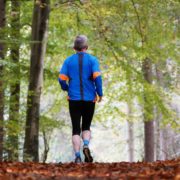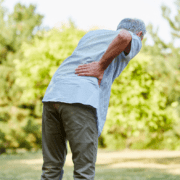Six Ways to Protect your Knees and Back when Gardening
Gardening is a favorite activity for a lot of folks – and lately I have been hearing many people having knee and back pain when gardening. To add more frustration to this topic, you might not even notice the pain until hours or days afterwards, which can make it challenging to address.
The good news is that there are several things you can do to protect your knees and back while gardening.
Here are 6 of my favorite tips to manage pain when gardening:
1. Warm up first
Before diving into any activity that you know you’ll be doing repetitively and for more than a few hours, it’s a good idea to warm-up. It doesn’t have to be anything crazy or excessive and 10 min is plenty.
Typically, you’ll only be gardening during nice weather. So enjoy it by taking a walk around your neighborhood first. Then do some easy light stretching to lubricate your joints before you begin. It won’t take long but your knees and back will thank you.
2. Avoid bending from the waist
Lifting and carrying heavy bags of soil or plants can put a lot of strain on your back and knees. You really want to make sure you’re using proper posture and body mechanics to avoid problems.
When lifting, be sure to use your legs instead of your back and hold objects close to your body. If you hinge only from your hips, for example, which a lot of people like to do, you will put extra strain on the back of your knees and lower back. Get in the habit of bending your ankles, knees, and hips in unison – kind of like an accordion – so that you build good muscle and body memory and don’t even have to think about it next time you’re gardening or lifting.
3. Take frequent breaks
It’s easy to get lost in the activity of planting and weeding. But even if you’re choosing good postures like I mentioned above – your back and knees still need a break. Our joints don’t enjoy anything when done repetitively or for prolonged periods, but especially too much bending or sitting on your knees. When you bend too much and too often, the discs in your lower back can get aggravated, and when you’re sitting on your knees, it’s a lot of pressure and can annoy your arthritis.
I recommend setting a timer and giving yourself a break every 30 min to change positions. Simply stand up and get out of the bent or sitting posture. Your back and knees will thank you and you’ll be able to garden for much longer and without risk of injury.
4. Pivot instead of twist
Your lower back and knees aren’t really designed to rotate, they are designed for bending and extending. So if you’re not careful – you can strain these areas with poor twisting and turning mechanics. When you have to rotate, you’ll want to pivot from your pelvis.
What does this look like?
Make sure your hips are always in line with the object you are moving and maneuvering. Keep your ribs in line with your pelvis and your pelvis in line with your knees and feet – and always move them as a unit. While it’s ok to bend and twist from your waist or legs on occasion – you’ll find yourself in some trouble when you do this over and over again – especially if you’re already prone to back or knee pain.
5. Use ergonomic gardening tools
The right gardening tools can be of significant help when it comes to maintaining good posture and avoiding overuse of your muscles and joints. Long-handled tools can help reduce the need for bending and stooping, which as already discussed, puts strain on your knees and back when overdone. Another consideration is the weight of your tools. It might be worth the investment to swap out your older, heavier tools for more modern, lightweight alternatives.
When you have to lift something heavy – especially repeatedly – use a wheelbarrow. This valuable gardening tool will allow you to lift and move heavy things with significantly less strain on your back. If you’ve got to be on your knees or squatting a lot – consider using a gardening bench and/or knee pads. These tools will make it easier to sustain activities that require prolonged bending or kneeling.
6. Use beds to raise your gardens
Raised garden beds not only look pretty but they are extremely ergonomic. Especially if you suffer from more chronic back and knee problems. Raised garden beds are elevated off the ground. They are easier to maintain and limit the amount of bending you have to do.
Raised garden beds are relatively simple to build and create. Even if you’re not having problems now with gardening, if it’s an activity you love to do, you might want to consider it. Making the investment in raised gardening beds now could go a long way in preventing knee and back problems in your future.
Gardening has so many positive benefits for both your mental and physical health – and the last thing I want is for back or knee pain to get in your way.
If you are experiencing pain when gardening – Give these tips a try.
But if it’s not enough, don’t give up.
Enlist the help of a musculoskeletal pain and movement expert who can help you figure out the source of your problem and provide you with practical solutions so that you can get back to gardening as quickly as possible.
If you are local to Portsmouth, NH – consider speaking to one of my specialists.
It’s a free, no-obligation call where you can tell us everything that’s been going on with you, and determine for yourself if we’re the best people to help you.
Click here to speak with a specialist.











